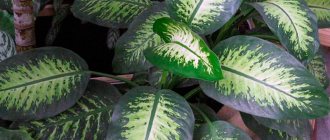Not every novice gardener knows how to water indoor plants. The usual picture: the housewife went to the window, was horrified that the soil in the pots was dry, filled a jug with tap water and splashed it under each flower. The watering rate is standard: until the liquid seeps into the pan. I just don’t understand why the same plants that look great on my neighbor’s plant are withering away and getting sick? A good gardener approaches each bush individually, knows whether in winter or summer it needs plenty of water, and in what season moisture should be limited. Sometimes it is advisable to supplement ordinary water with succinic acid, iodine or potassium permanganate.
How often should you water indoor plants?
It is impossible to give an exact diagram of the frequency and volume of watering; it all depends on many conditions. People and animals also drink differently depending on weather conditions, food eaten, health status and many other factors. So is a flower: on a hot day in the sun it needs a lot of water; in cool and cloudy weather with high air humidity and in winter, liquid is almost completely unnecessary. You need to take watering with the addition of any components especially seriously: succinic acid, stimulants, fertilizers. If excess moisture simply flows out through the drainage holes, then the excess nutrients, especially at a time when they are not needed, will cause great harm.
What determines the need of indoor flowers for liquid? The larger the bush, the more water it needs. Plants require a lot of moisture in the following cases:
- during flowering and active growth;
- in the heat, in bright sunlight and low air humidity;
- if the “green pets” have strong roots;
- if the plant has thin leaves and stems or lush greenery;
- if they grow in ceramic dishes.
Advice
Make sure that the volume of the pot matches the size of the root system. In a cramped container, the flower will quickly draw all the moisture from the soil, and you will have to water it very often.
The general rule is to water your flowers when all the soil is dry. But how to correctly determine this moment? The surface may be dry, but in the middle the soil is simply saturated with water.
There are several methods to determine when it is time to water a flower.
- The surface of the earth becomes pale and, when kneaded with fingers, turns into dry dust.
- Tap the bottom of the pot with your fingers. If you hear a ringing sound, the soil is dry.
- Use your finger or a stick to dig up the soil near the outer edge of the pot to half the depth; if the soil there is dry, it’s time to water the plant.
- Wet soil weighs more than dry soil. Lift the pot before and after watering and remember how heavy it should feel.
- Use a humidity indicator. Please note that if the soil contains a lot of mineral salts, the readings may not be accurate.
All these methods are best used only when you have gained sufficient experience. A gardener who understands the needs of his pets only needs a few seconds to understand what they want to drink. There is only one recipe: start with the most unpretentious and hardy plants. When you learn to correctly understand their needs in summer and winter, you can plant capricious and exotic flowers.
All these recommendations apply to plants with thin leaves that require constantly moist soil. Flowers with thick or hairy leaves and fleshy rhizomes can withstand drought for some time. They need to be watered a few days after the soil dries. In winter, during the dormant period, plants should be watered no more than once every 2-3 weeks. Cacti and succulents are even more adapted to drought; it is better to supply them with water no more than once a week, and with high air humidity and cool temperatures, sometimes one watering a month is enough.
We recommend: Five tips on how to store calla lilies at home during the winter
Watering methods
There are several methods by which you can water flowers in the summer. The most important thing is that hydration must be carried out in two mandatory stages:
- irrigation of the top layer of soil;
- abundant wetting of the soil, which will allow moisture to enter the deeper layers of the soil and stay there for some time.
Accordingly, watering flowers in summer can be done in two ways:
- Sprinkling.
- From a hose.
The method of sprinkling or moistening flowers from a watering can is the most optimal for all flower crops. The effect of such irrigation is similar to natural precipitation, and accordingly, plants respond well to it. During sprinkling, water enters the soil in doses and moderation, moisturizes the root system, protects leaves from dust, reduces soil erosion and improves aeration. Watering with a watering can additionally provides high-quality air humidification in the flower garden, which is very important in dry weather.
Watering with a hose is not the most convenient option for moistening a flower garden, but it is quite acceptable if done correctly. It is better to use rain water or from a pond. Well water requires a certain amount of time to settle; prolonged moistening with such liquid can lead to excessive salinization of the soil. Moistening with water from a hose should be done with a weak stream directly along the top of the plants, and not from the sides, as most novice gardeners mistakenly do.
An important point is to use only heated water. Watering with cold water leads to hypothermia of the root system, rot and even death of flowers. It is optimal to soak the water for 24 hours.
Signs of watering problems
If watering is inappropriate, the plants will immediately show the owner that they feel discomfort. How can you correctly understand that a flower is suffering from thirst?
- The leaves are falling.
- All green parts lose their elasticity.
- Buds and flowers quickly wither and fall off.
If you notice dangerous signs in time, the flower can still be saved. When the soil is too dry, it stops absorbing water and the liquid immediately spills into the pan. Simply watering a plant means doing nothing. Rinse it off from the shower and submerge the pot completely in water. To better absorb the liquid into the soil, pour 2-3 drops of liquid dishwashing detergent into it and mix well. Do not add any fertilizers or succinic acid, first let the plant recover. After about an hour, remove the pot from the water. When the soil dries, look to see if there are any gaps between the soil and the walls of the pot, and fill the voids with a nutrient mixture.
If you overdo it with watering, the following signs will indicate this:
- rot and mold appear on the above-ground parts;
- the ends of the leaves turn brown;
- the flower grows and develops poorly;
- the plant sheds its leaves, but in winter this is a natural phenomenon for some species.
It is urgent to take action before the plant dies. Remove the flower with the earthen lump from the pot, cut off the rotten roots. Wrap the soil in some fabric that absorbs water well or with toilet paper. Change the drying material from time to time. When the excess liquid has been removed, replant the plant in another container or old vessel, having previously disinfected it.
What to water with
Experienced gardeners recommend watering with a watering can.
If you use a glass or jug for this purpose, then, most likely, the water will simply overflow over the edges of the container onto the floor, onto the windowsill, or stain the table. Thanks to the long spout of the watering can, spills will be completely eliminated as the water will be directed directly to the base of the flower.
Sheep on the highway and other photographs for an international photo competition
Dangerous not only for humans, but also for the Earth: how to protect yourself from magnetic storms
The doctor spoke about the expiration dates of antiseptics
This watering can can also be recommended for watering plants located high above your head.
What water to water indoor plants
It's the 21st century, and water is still often chlorinated. If you take irrigation liquid from the water supply, pour it into open containers in advance and leave for a day so that harmful gases escape. Tap or river water may contain dissolved salts. If the soap produces almost no foam when washing and bathing, your water is very hard and can damage your plants. To soften it, you need to stir a teaspoon of ash into each liter of liquid or add a few drops of vinegar. If you are not sure about the quality of the water, it is better to pass it through a special filter.
The best option is melt or rain water. It must be fresh; do not use liquid that has been in the barrel for a long time and has acquired an unpleasant odor. Collect snow for thawing in places where there are no roads, landfills or other dirty objects nearby. When you only have very hard water on hand, boil it.
Never water indoor flowers with cold water. Sudden temperature changes cause stress and disease in plants. The liquid should be at room temperature or slightly warmer. Place vessels with water on a sunny windowsill, and in winter next to the radiator; within a day it will become warm enough.
Spathiphyllum
armifello / Shutterstock
Spathiphyllum blooms in spring or summer. Its flowers are a bit like calla lilies, but it requires much less attention.
How to care
Light or shadow . Spathiphyllum loves light, but not direct sunlight. So window sills and balconies are prohibited, but the space next to the windows can be safely used. If you don’t want to see it bloom, you can put the spathiphyllum in the shade: it won’t get sick or die, just the leaves will turn dark green and the buds won’t appear.
Water . In the warm season, spathiphyllum needs to be watered abundantly, but only once every two to three days. In cold weather - less often. If dark spots appear on the foliage, it means you overdid it with watering. It is advisable to periodically spray the spathiphyllum with water from a spray bottle.
Transplant . It is enough to do it once every two to three years, but you should always choose a larger pot so that the overgrown roots feel comfortable.
What else do you need to know . Do not leave spathiphyllum in a room with a temperature below 10 degrees and do not create a draft: the plant will “get cold” and will rot.
How to water flowers in summer
In summer, most indoor plants develop intensively and need a lot of liquid. Make sure that the soil in the pots does not dry out. At this time, you can water with water containing nutrients: succinic acid, fertilizers, iodine, potassium permanganate. Remember that even the most useful component in large quantities is harmful, do not exceed the concentration of solutions:
- For 10 liters of water – 0.1 g of potassium permanganate.
- For 1 liter of water – 1 g of succinic acid.
- For 1 liter of water – 3 ml of iodine.
Advice
If you add a little hydrogen peroxide to the iodine solution, the composition can be used to treat plants affected by late blight.
There are plants that have a dormant period in the summer and active growth in the winter. You need to water them no more than once a week and make sure that the soil does not become too wet or turn into a completely dry lump. Find the coolest place in the house and put the pots there so that the heat does not prevent the flowers from resting properly. Do not under any circumstances add succinic acid, fertilizers or stimulants to the water.
We recommend: How to properly care for the graceful episcia
If you often leave your apartment for a week or more, do not make your pets suffer from thirst, choose some watering option without your presence. There are various devices for keeping the soil moist. Invest in a self-watering pot or drip watering system for indoor plants. When transplanting, add substrates to the soil that accumulate moisture and then slowly release it. If the business trip is urgent and unexpected, fill the trays with water; the soil will gradually draw it in through the drainage holes.
How to water indoor flowers to make them bloom
The gardener's reward is the lush flowering of his plant. For this, time and effort are spent, a number of rules of care and maintenance are observed, and conditions are created.
Note: There are some species that rarely bloom. They release buds only when mature. These species include cactus and bamboo. Some cacti produce flowers in 10-15 years of life, bamboo once every 80 or 100 years.
In order for a plant to bloom, it is necessary to awaken the “survival instinct” in it. To do this, uncomfortable conditions are created for them, since under the watchful attention of the grower they are often in comfortable conditions and do not want to reproduce.
To form buds, a difference between day and night temperatures is artificially created. In normal times, a temperature of 18-20 degrees is considered comfortable, but in such conditions the plant will only throw out its leaves. To increase the chance of a bud appearing, the night temperature is reduced by 15 degrees.
Do you need to water house flowers in winter?
In winter, many plants go dormant. Life processes are very slow, growth and development stop. They rarely need to be watered; you yourself will notice that the soil dries out very slowly. If the air is very dry, the soil must be moistened, but neither succinic acid nor other fertilizers or stimulants should be added to the water.
Remove all self-watering systems; they are designed to keep the soil moist. If you watered your flowers through the drainage holes in the summer, empty the water from the trays. Wintering should take place in a cool, not too dry room. It is better not to water cacti and succulents in a cool place during the dormant period.
Some plants actively develop and bloom in winter. They should not be left without water; moisten the soil as soon as it dries. Do not forget that during the flowering period, plants require increased nutrition. You can feed them with complex fertilizers and amber water.
How to water a money tree after replanting
The need to replant a money tree arises when the roots of the plant become so long and branched that they entwine the entire earthen lump in the pot. Such plants are moved to a larger diameter vessel. Young crassulas should be planted in a new location every year, and older plants should be planted once every three to four years. You should not make a common mistake for beginning plant growers - immediately plant a young flower in a large pot. Indeed, in such a container after each watering, moisture will accumulate due to slow drying, which will significantly increase the risk of rotting of the root system and death of the plant. Transplantation is best done in the spring, when active sap flow in the tree resumes.
It is important to follow the step-by-step watering schedule after transplanting the fat plant. The main rule is that it is better to give less moisture than to transfer it
Something to remember! The money tree easily copes with drought, while waterlogging can destroy it.
After transplantation, watering is carried out in two ways:
- In case of emergency resuscitation (for example, after flooding) and damaged roots drying out in air, the plant should be watered very little and immediately after placing the rhizomes in the substrate;
- When planning a transplant, be sure to water the new “tenant” after a day or two. In this case, the soil mixture will settle a little; it should be filled to the required level and watered again (avoiding stagnation of water in the pan).
It is necessary to water after transplanting within a day or two.
Many houses have a Crassula money tree on their window. It is believed to bring good luck and financial well-being. In general, this plant is unpretentious; the main thing is to water it correctly and maintain the temperature regime. The number of waterings varies depending on the season: in the hot summer it is a couple of times a week, in the winter when the flower goes into hibernation, once a month is enough. If these conditions are met, the tree will delight its owners with lush “fleshy” foliage in the form of coins.
What can be added to water for irrigation
When watering, you can use various nutritional supplements. Many housewives pour the water in which they boiled potatoes into pots. Starch is a good supplement, but only if you prepared the dish without salt. You can water with mineral water if it is not too saturated with salts. Keep the carbonated drink in an open container until all the bubbles come out of the liquid.
You can add 1 g of succinic acid to a liter of water; it is a good stimulator of plant growth and development. Although this substance is harmless and has a good effect on the immunity of indoor flowers, it is not necessary to use it more than 2 times a month. When replanting, you can immerse the roots in this solution; it stimulates the growth and development of all parts of the plant well.
When watering a flower with water and potassium permanganate, you will destroy the midges that appear from dampness. The same solution will help disinfect the soil in pots. Water with iodine is an excellent cure for fungal infections. All these components are not only a therapeutic agent, but also a source of essential microelements.
Don’t envy your neighbor, no matter what flower garden decorates her window. Establish proper watering of indoor flowers, do not forget about succinic acid and other useful additives. In a couple of months you can invite your friend to visit. Seeing your lush flowering bushes, she will not believe that there are ordinary geraniums and gloxinia on the window. Now let your neighbor be jealous that your flowers are better!
What else do you need to know
It may be that your indoor flowers will grow noticeably weaker than before. This sign indicates that it is time to reduce the volume of fluid. After this, observe the plant and, if growth resumes, return to the previous volume. According to experts, it is mostly beginners who water indoor crops too often and too much. As a result, the root system is affected by rot and various fungal diseases.
The disease can be judged by drooping stems, wilted leaves and a whitish coating. In addition, fungus gnats and other pests appear in the pot, the ideal breeding ground for which is constantly moist soil.
These signs indicate an urgent need to reduce the amount of water and water less frequently. If the leaves of domestic flowers dry out and begin to fall off, the edges become crunchy or have acquired a brownish tint, it means that the crop is suffering due to lack of water. Soil moisture is determined using a special meter.
It is stuck into the ground to a certain depth.
For those who are away from home for a long time and cannot water, experts recommend using a very effective method, which is also called a “wick”. One end of the strip of material is placed in a pot, and the other in a container with water. As a result, the land will never dry out.
Found a violation? Report content
The most common mistakes when watering plants and flowers
We often make blunders and mistakes by providing to indoor plants , but all this can be corrected by correctly assessing the problem that has arisen. Let's learn to determine the correct sequence of our actions.
One of the most obvious signs is that the soil in the flowerpot is so dry that when watering, the water does not have time to be absorbed, but flows out of the pot. And if for plants that need little moderate watering this is not bad, then for moisture-loving plants it is a big problem. If this happens, then place the pot in a bowl of water for a while. You need so much water that the pot is about half full.
But if there is mold or “fluffy grayness” on the surface of the soil, this is a clear sign that we have overdone the watering or have poor drainage. And here there are two scenarios: let the soil in the flowerpot dry completely, and then continue to water, dosing the water correctly. If the mold does not go away, a transplant is needed. Dry the soil, remove the plant from the pot and check the roots for rot. We remove the “sick” areas of the root and replant the flower in new soil and in a pre-treated pot.
It also happens that a little water is poured, but it does not penetrate into the ground for a long time. Careful loosening of the soil can help here so as not to damage the roots located on top; loosen the soil in the flowerpot. Water with purified or settled water in small doses for one or two days.











